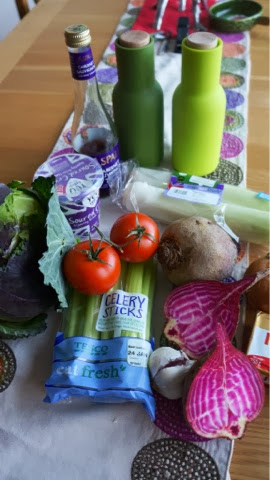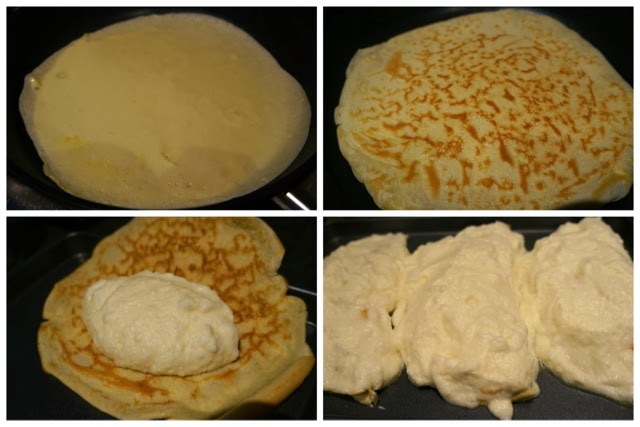Fanny starts her Greek menu with a 'simple and amusing' salad known as Pallas Athene's Salad. Fanny doesn't seem amused recounting the time this was served to her by a famous cook in private service on the Island of Corfu. Fanny claims the 'cook' was bad tempered and needed to be flattered to 'bursting point' otherwise she would not bring her confections to them and her employer for 'picnics on the sands'. Fanny exclaims that this cook ONLY had to walk across the road to do so. Fanny is obviously not used to people who will not jump when she clicked her fingers, and was presumably missing Poor Sarah, Peter or any of her faithful unquestioning assistants while on holiday. At any rate, the salad is indeed simple - chopped tomatoes, green peppers, herbs and olives. Oh did I mention I can't BEAR olives? I replace them with little roasted capsicum antipasti. Drizzle with cottage cheese and sour cream and serve. Simple, although the amusement is a little lost on me.
The main course is a moulded Moussaka which Fanny makes with minced mutton. Try saying that quickly. I happen to have a lovely vegetarian Haggis from Macsweens left over from Burns night which seems to be a perfectly spicy substitute here. The aubergines are sliced in half and fried gently on the cut side until their skins wrinkle. The flesh is then scooped out and mixed with the haggis, a chopped tomato and an onion, some herbs and an egg. The aubergine skins are used to line a soufflé mould, and the mixture packed in and steamed for an hour. The finished Moussaka, but not as we know it, is served turned out with a tomato coulis. It cuts really well, and tastes smashing.
The coulis is made from chopped, skinned tomatoes, herbs, garlic, salt and pepper which is gently heated with a little water and simmered until 'collapse' (the tomatoes not me). The strained juices are mixed with a little of that nasty olive oil Fanny was complaining about. Just not too much, ok?
For this Greek feast, Fanny gives a dessert recipe which doesn't sound Greek at all, but she calls it Solines. They are basically chocolate Mini-Rolls, who knew they were Greek? I make a thin Swiss roll, cut it into squares and cut squares of greaseproof paper to match. Melted chocolate chips are spread onto each sheet of greaseproof, and just as they start to 'lose their gloss' without becoming set, Fanny instructs that the little sponge squares be spread with whipped cream and rolled up in the chocolate papers. Once completely set, the paper is easily peeled off to reveal the, well, chocolate mini-rolls. They do peel well.
Whether Fanny was a fan herself or not, this menu is a lovely taste of Greece, and I managed to prepare it all by myself with no bad tempered cooks helping. Well, apart from Fanny Cradock herself of course.

































